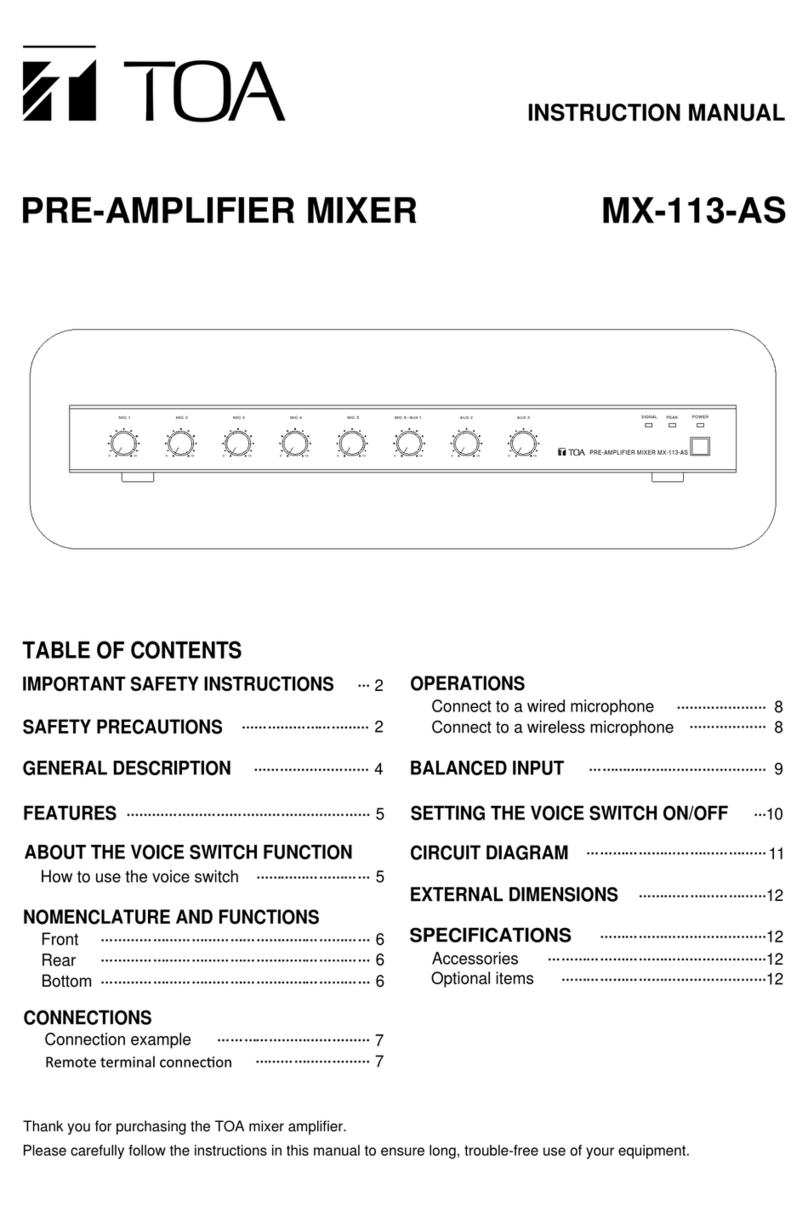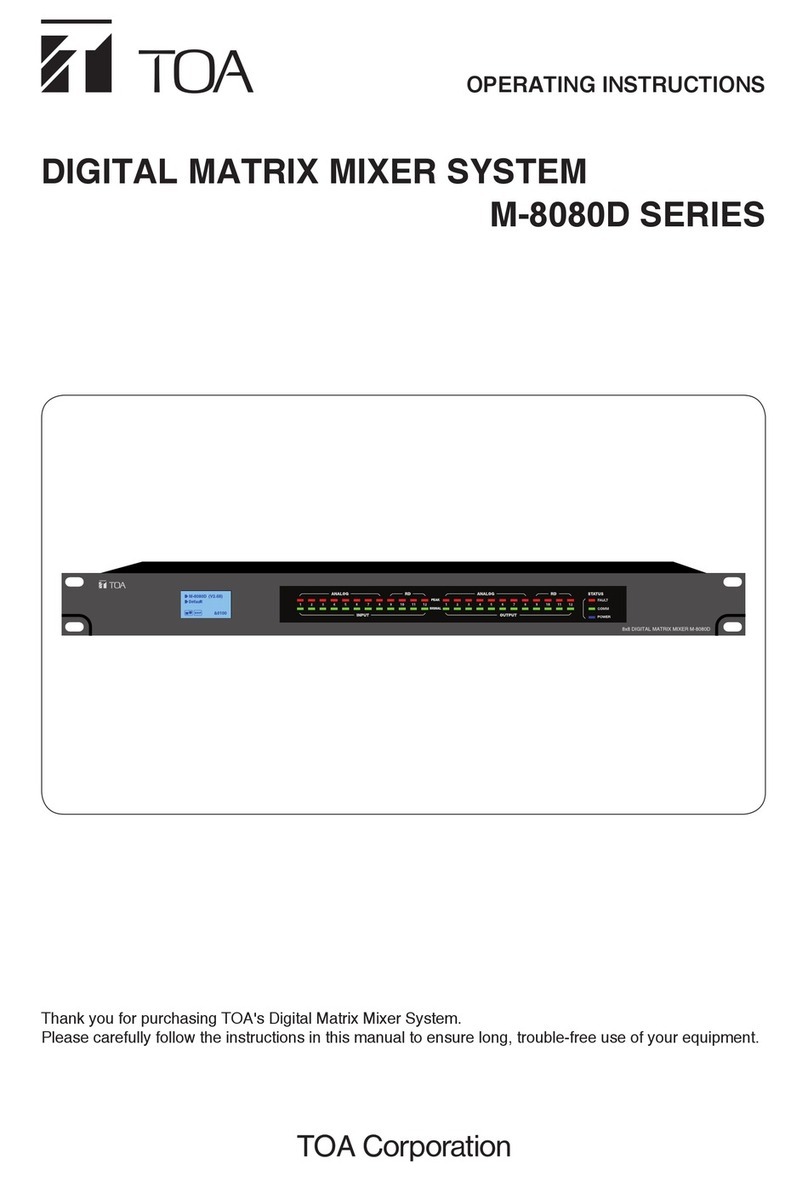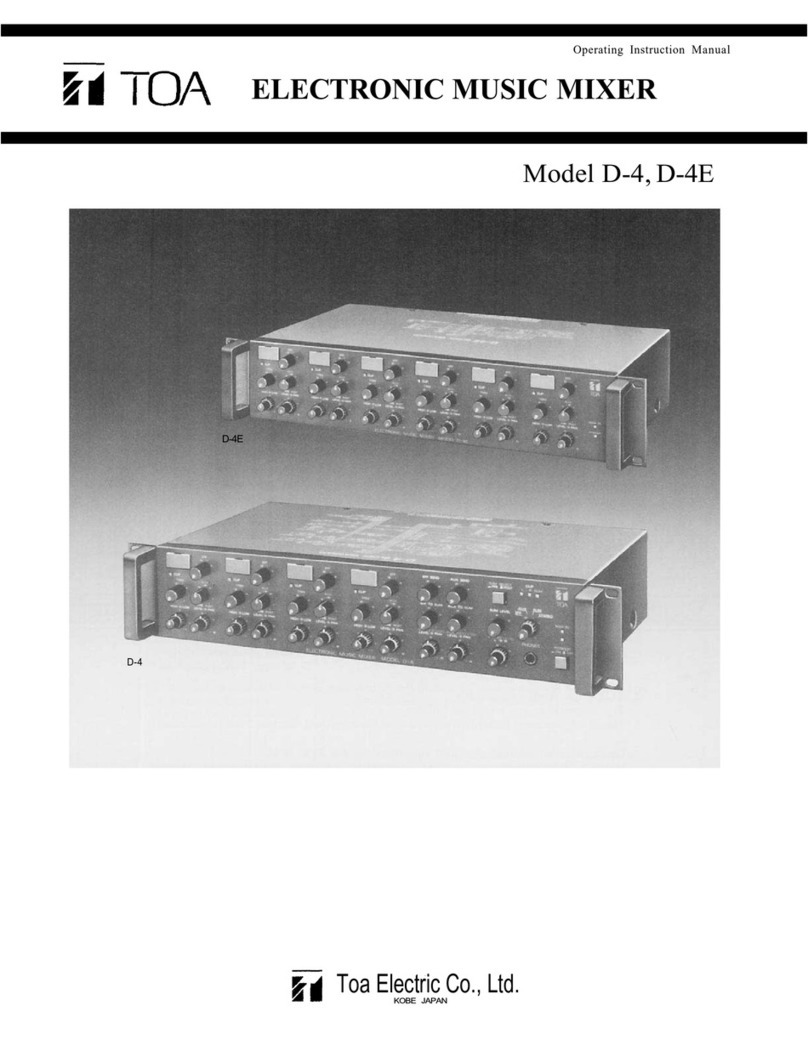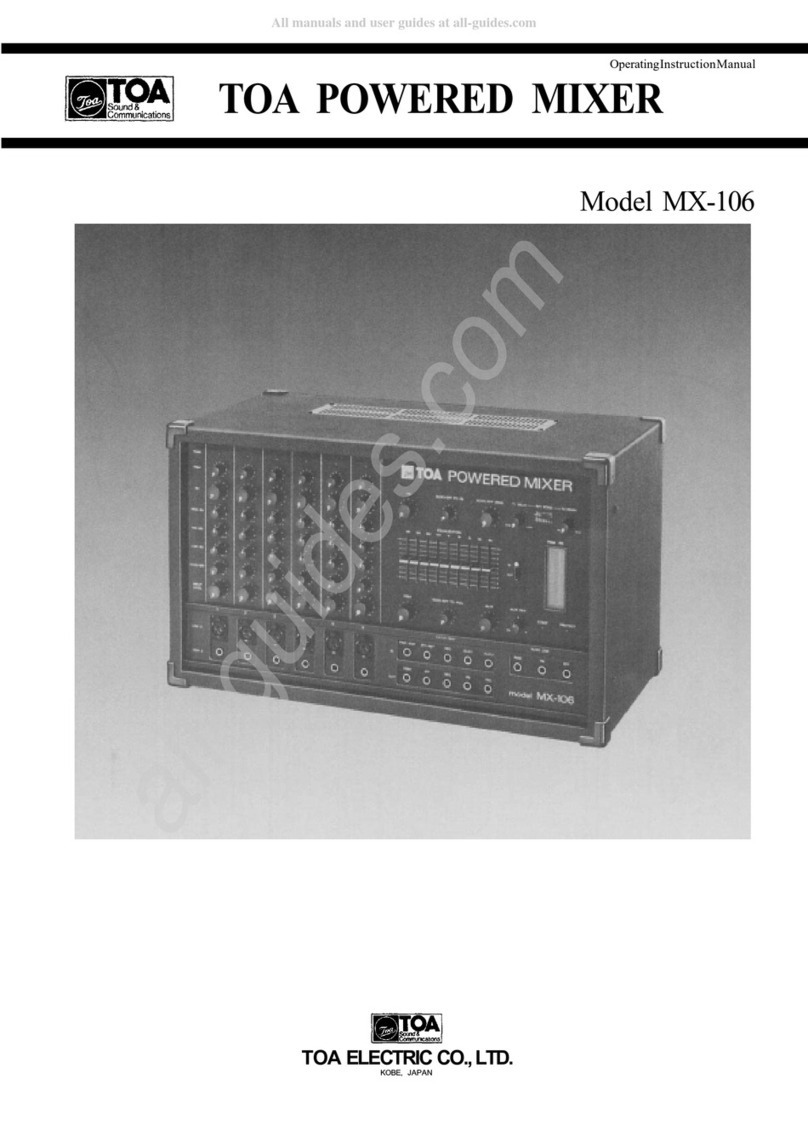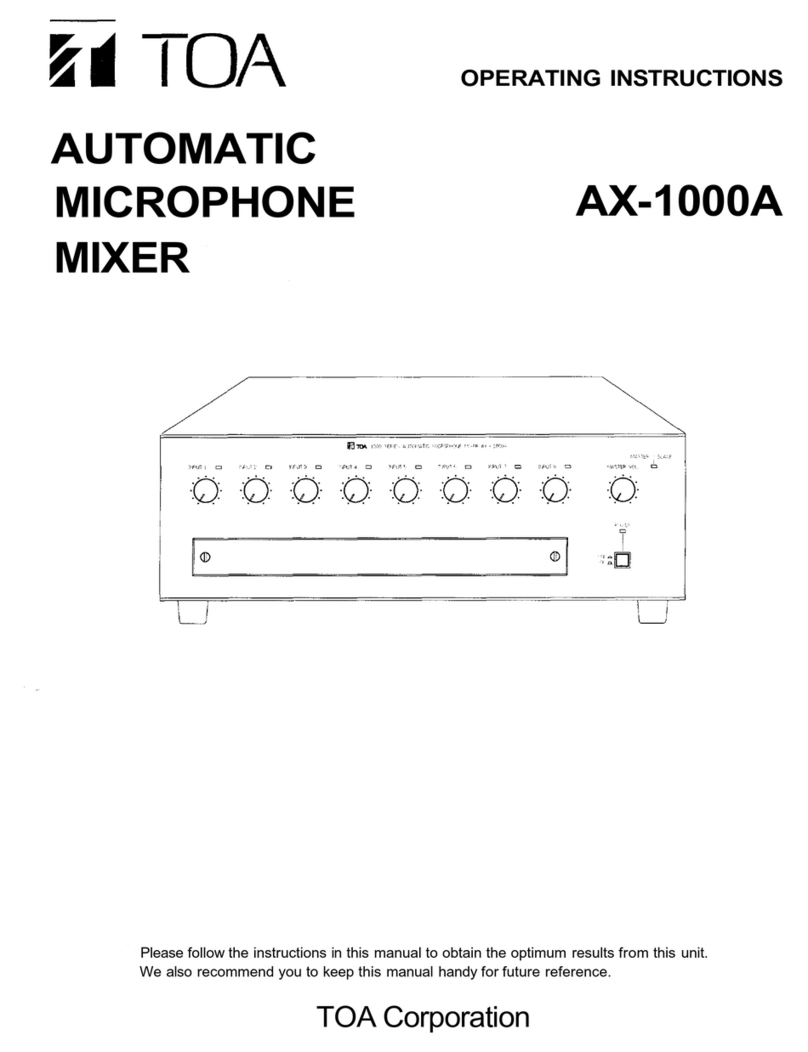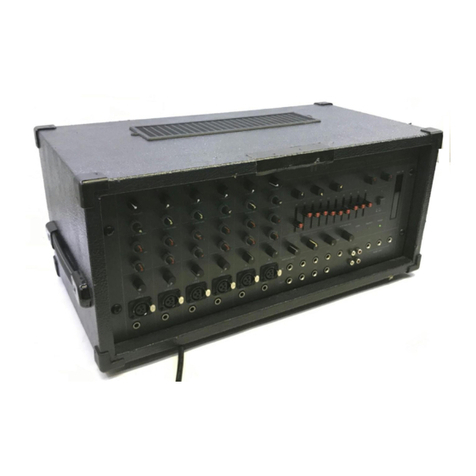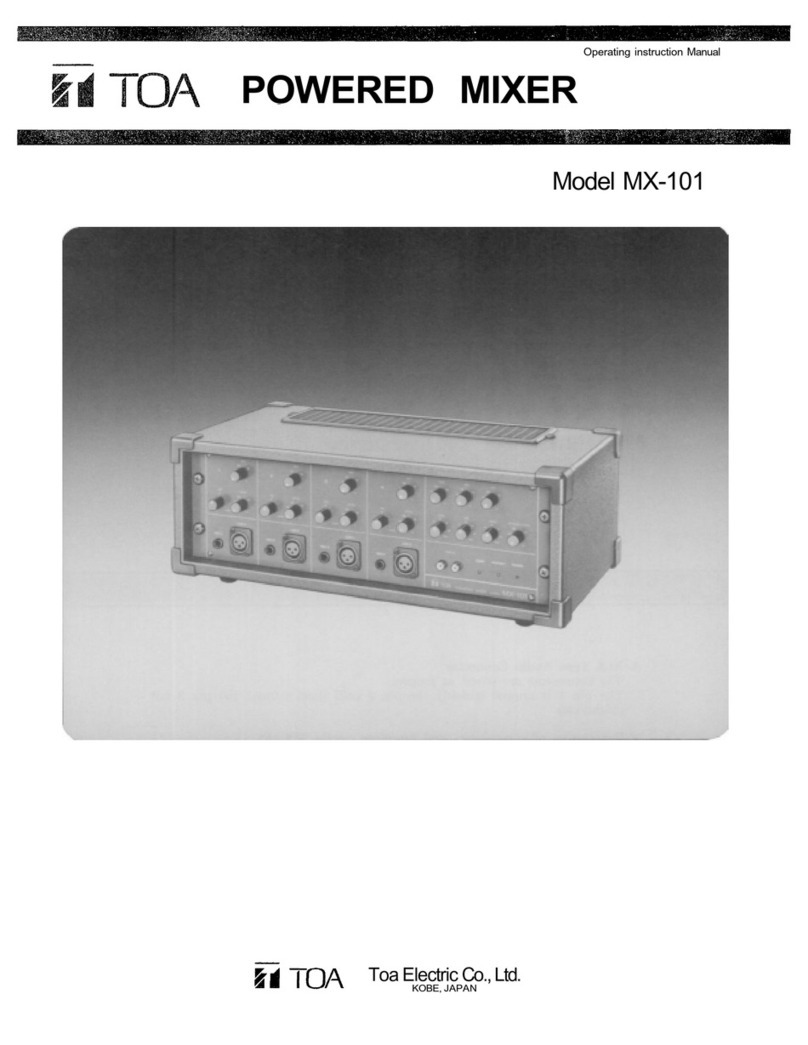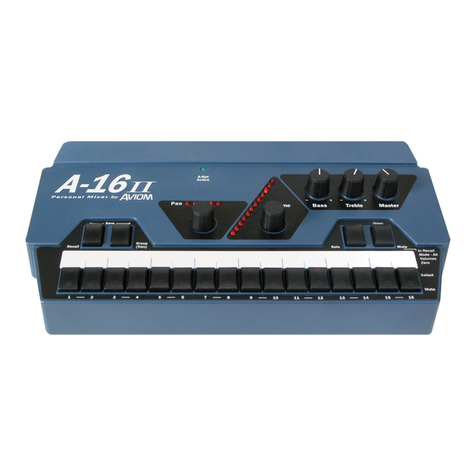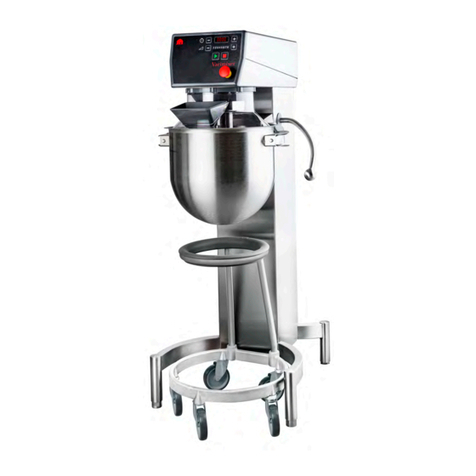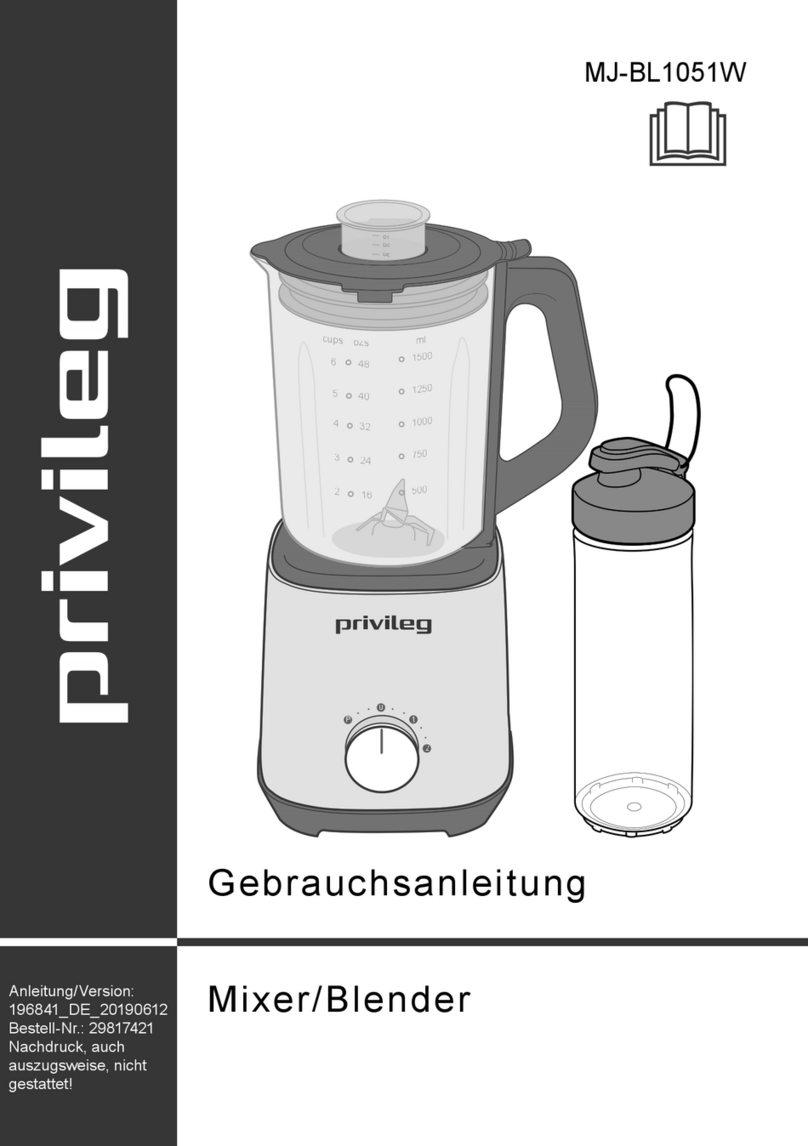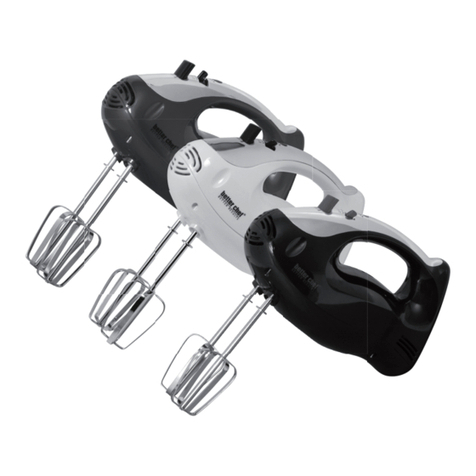
Pe k Indic tor (PEAK)
The peak indicator lights when
the pre or post EQ signal level
reaches 3dB below clipping,
giving a visual re erence or
optimum setting o the trim con-
trol.
Foldb ck Control (FB)
The Foldback control deter-
mines the level o signal assign-
ed to the oldback mixing buss,
thus setting the level o that
channel in the on-stage monitor
mix.
High Equ lizer Control
(HIGH EQ)
The high EQ control alters the
high requency response o the
input channel, providing ±13dB
at 10kHz, and ±15dB at 20kHz o
continuously variable active
shelving equalization. The "0"
detented position provides lat
audio response.
Middle Equ lizer Control
(MID
EQ)
The mid EQ control provides
±15dB o continuously variable
active peaking equalization at
2kHz. and has a lat audio re-
sponse when set to the "0"
detented position.
Low Equ lizer Control
(LOW
EQ)
The low EQ control provides
±13dB at 100Hz and ±15dB at
50Hz o continuously variable
active shelving equalization.
The "0" detented position pro-
vides lat audio response.
Reverb/Effects Control
(REV/EFF)
This control determines the
level o signal assigned to the re-
verb e ects buss. Rotating the
control clockwise increases the
amount o reverb e ect in that
channel.
Input Level Control
(INPUT LEVEL)
The level control provides con-
tinuously variable adjustment
o the channel output to the
program mixing buss, thus deter-
mining the level o that channel
in the main sound system mix.
Since the reverb/e ects signal is
"post" this control, an increase
in the level o the channel's out-
put will also result in a cor-
responding increase in the re-
verb e ect o that channel. The
nominal level o the input level
control is at the "10" position.
Low Imped nce Connectors
(LOW
Z)
The XLR connectors are low im-
pedance, electronically balanced
inputs with an input impedance
o 1k ohms.
Input Trim Control (TRIM)
The input trim adjusts the gain
o the head-amp stage o the as-
sociated channel, providing
39dB o gain control. When the
trim control is set to the "10"
position, the nominal input
levels o the low-Z and high-Z
inputs are –55dB and –35dB re-
spectively. At the "0" position
the levels are –16dB and +4dB.
The trim o each channel should
be adjusted so that the peak LED
just begins to light, or only
lashes occasionally. This will
ensure lowest distortion levels
and optimum signal to noise
ratio.
Foldb ck M ster Control (FB)
The FB master control adjusts
the overall combined signal
level o the six independent
channel oldback sends, and
thus the level o the entire on-
stage monitor mix.
Reverb/Effects to Foldb ck
Control (REV/EFF TO FB)
This control adjusts the amount
o reverb/e ects signal that is
returned to the oldback buss
and thus the level o reverb/
e ects contained in the on-stage
monitor mix.
Gr phic Equ lizer
(EQUALIZATION)
The graphic equalizer is 1/1
octave with 9 independent ac-
tive bands ( ilters), providing
12dB o boost or cut at each
center requency. The "0" de-
tented position provides lat
audio response.
High Imped nce Connectors
(HIGH Z)
These connectors are unbal-
anced, standard 1/4" phone
jacks with an input impedance
o 50k ohms, and an input level
o –35dB when the trim control
is set t o "10". Whe n a plug is in-
serted into the high –Z input, the
corresponding XLR connector is
automatically switched out o
the input circuitry.
Progr m M ster Control
(PGM)
The PGM control adjusts the
overall combined signal level o
the six independent channel
level controls, and thus the level
o the main sound system.
Reverb/Effects to Progr m
Control
(REV/EFF TO PGM)
This control adjusts the amount
o reverb/e ects signal that is
returned to the program buss
and thus the level o reverb/
e ects contained in the main
sound system.
Aux Level Control (AUX)
This control sets the overall
level o the Aux input signal.
Buss Link J ck
(BUSS LINK)
P tching J ck
(PATCH BAY/IN)
P tching J ck
(PATCH BAY/OUT)
Aux P npot (AUX PAN)
This control assigns the aux-
iliary input signal (a tapedeck,
etc., connected to the aux input
jacks) to either the program or
the oldback mixing busses. At
the center position, the signal is
routed equally to both busses.
Panning rom one side to the
other gradually assigns the
signal to either independently.
Power Amp Compression
Indic tor (COMP)
The Comp LED lights when the
internal compressor is acti-
vated. The compressor is pro-
vided to protect speaker systems
by compressing the input signal
level o the power ampli ier
when clipping occurs in the out-
put stage. Frequent lashing o
the LED is not reason or alarm.
However, a constant or steady
light indicates that the MX-106R
is being overdriven and that the
internal power ampli ier is
possibily "under powered" or
that application. The output
level o the MX-106R should be
decreased until the LED only
lashes intermittently.
Reverb/Effects Send Control
(REV/EFF SEND)
This control adjusts the overall
signal level o the e ects mix
that is delivered to the internal
reverberation unit, or to an
external e ects device through
the e ects output. The send con-
trol works in conjunction with
the REV/EFF to PGM and the
REV/EFF to FB controls to set
the overall level o reverb/
e ects in the main and monitor
sound systems.
Reverber tion Low Equ lizer
Control
(REV
LOW EQ)
The low EQ control alters the
low requency response o the
reverberation signal. The "0" de-
tented position provides lat
audio response.
Reverber tion High Equ lizer
Control
(REV HIGH EQ)
The high EQ control alters the
high requency response o the
reverberation signal. The "0" de-
tented position provides lat
audio response.
Gr phic Equ lizer In/Out
Switch (IN/OUT)
The in/out switch enables com-
parison between a lat response
(out) and the equalized response
(in). The "out" position com-
pletely removes the equalizer
rom the MX-106R circuitry.
Fluorescent B rgr ph Pe k
Meters (PGM/FB)
The high intensity meters enable
visual monitoring o the pro-
gram and oldback output signal
levels.
Power Amp Protection
Indic tor (PROTECT)
The indicator LED lights i the
power ampli ier output is short-
ed, i the temperature o the unit
rises above acceptable levels, or
i DC is dri ted to the speaker
outputs. I the LED should light,
speaker wiring and ambient
temperature o the MX-106R
should be checked. I the LED
remains lighted, the unit should
be re erred to quali ied service
personnel or repair.
Note:
The MX-106R protection cir-
cuitry will (1) detect ' aulty con-
ditions' within the power amp-
li ier, (2) give a visual indica-
tion, and (3) automatically shut
down until the ault condition is
alleviated. This special circuitry
ensures maximum reliability
and virtually eliminates equip-
ment damage due to unsa e or
ault conditions. Please re er to
ault protection table on page 7
or ull explanation o this
important eature.
—
3 —
Front P nel
